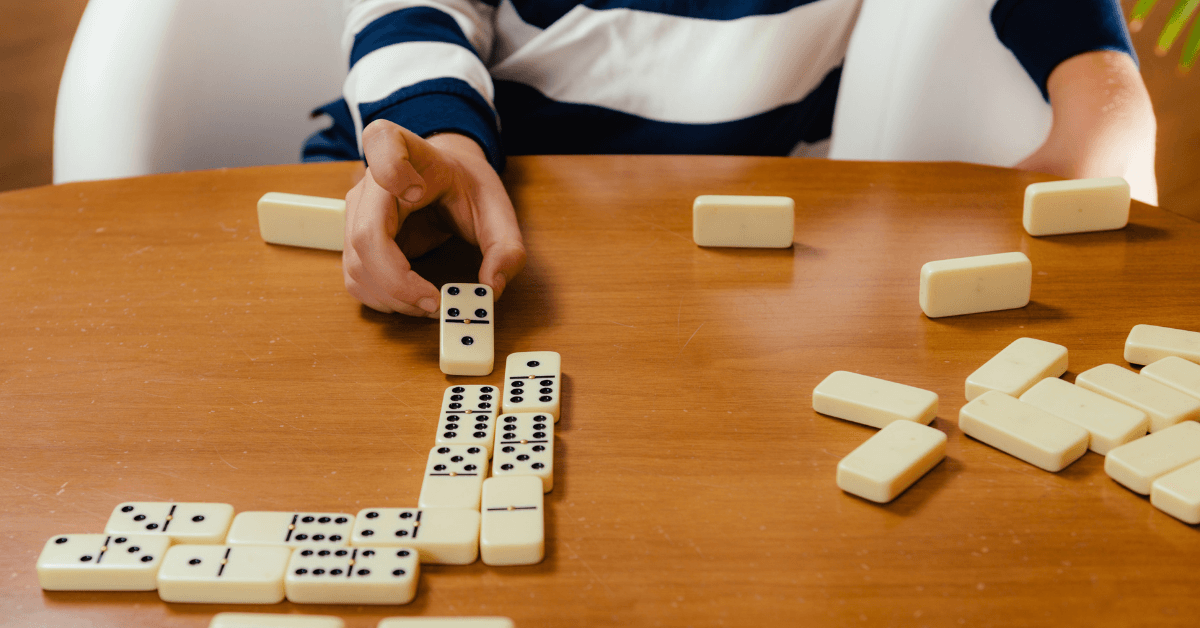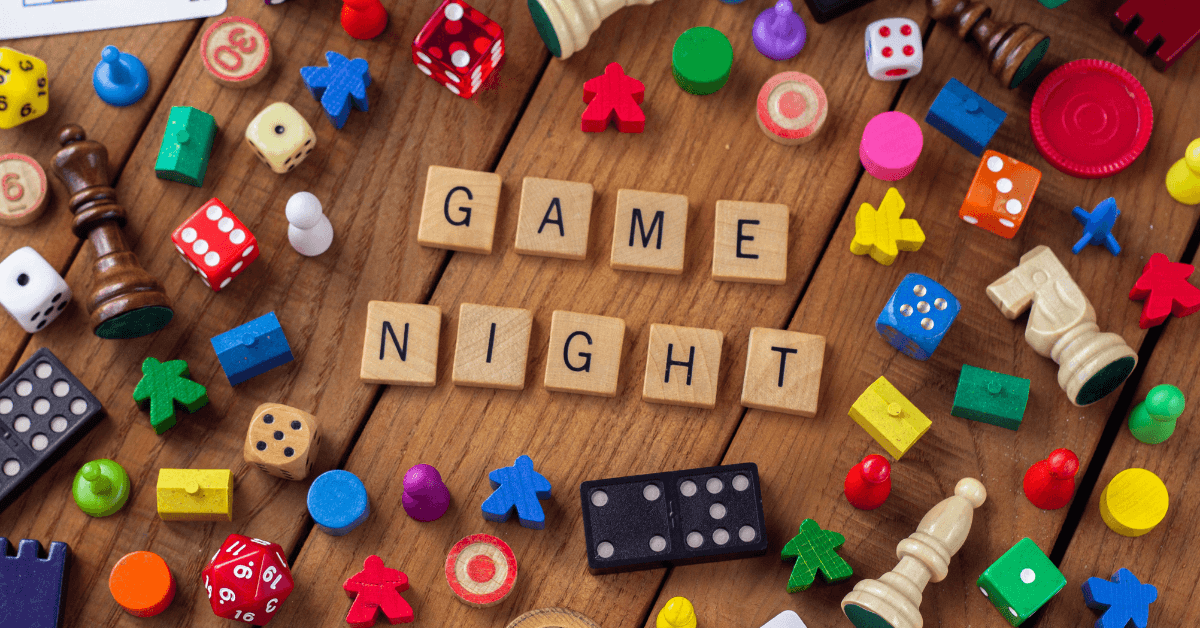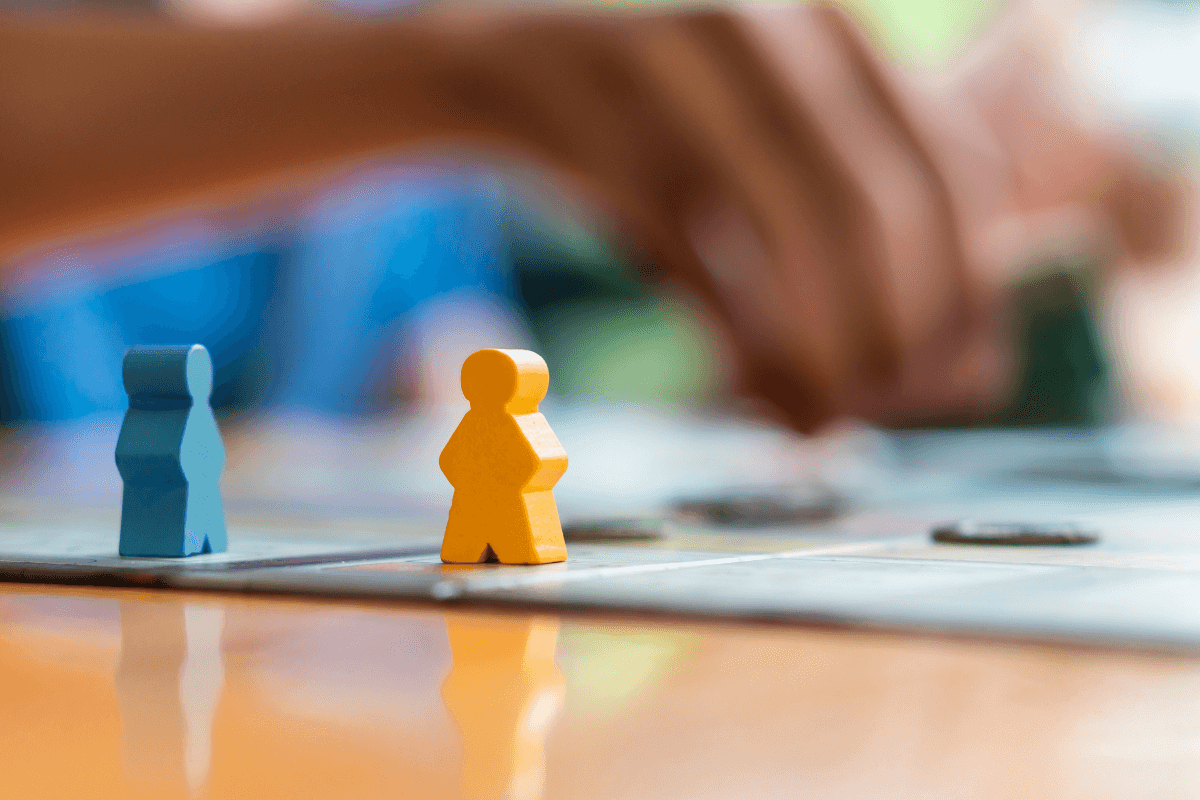One of my favorite units in elementary school was the westward expansion unit. It wasn’t just because I loved the idea of pioneers camping out around a fire each night, circling the wagons to protect against the unknown. It also wasn’t because my favorite American Girl doll was Kirsten Larson. The reason westward expansion really stands out in my memory as my favorite unit of study, even 30 years later, is the game Oregon Trail.
Sure, naming my wagon party was fun, and hunting for buffalo or bears was a bit of a thrill at first, but the game itself wasn’t just an exercise in mouse clicking. Through playing Oregon Trail, I learned the most common routes, trading posts, and landmarks for westward expansion—among many other things. While I might have learned through reading or flashcards, I’m confident that the reason I still remember them today, all these decades later, is because I learned through play.
Back then, I hadn’t heard of gameschooling, but I’ve always known that play is a powerful tool.
As a teacher myself, I often challenged my students to create their own games to show their knowledge or practice their skills. As a homeschooling parent, my kindergartner practiced number recognition through Uno and Go Fish. Even then, gameschooling was still not a term I’d heard before, but incorporating games into education isn’t a new concept. For many teachers and homeschoolers, it’s simply good practice that now has a name.
What is Gameschooling?
Gameschooling is exactly what it sounds like. Simply put, it’s learning through games. This can look obvious, like in the case of my fourth grade class playing Oregon Trail, or it might be a little less direct, like kindergartners playing Candy Land. The common thread is that the learning itself is purposeful, but playful. Oftentimes, the kids don’t even know it’s happening.
If you think about it, nearly every game involves some element of learning, whether it’s reading directions, calculating strategy, counting spaces, or just the simple act of turn taking. Games in and of themselves are educational, and when leveraged purposefully, they can be a powerful learning tool.
This is what makes gameschooling so engaging. Many kids are so focused on the objective of the game, whatever that may be, that they forget that they’re reading game cards, adding number dots on the dice, or plotting their next move along the way.
Does Gameschooling Actually Work?
The research is clear—learning through games is both effective and efficient. In fact, in a culture where many learners are accustomed to instant gratification and constant engagement, games provide a high level of motivation for learners of all ages.
The educational benefits of gameschooling don’t stop at content knowledge, though.
While gameschoolers might use games to help memorize and contextualize information or build and apply new skills, the benefits go much deeper.
Students who learn through play develop important social skills and build connections with their family or peers along the way. Playing games requires navigating a social environment.
Turn taking, emotional regulation, and humility take center stage. Students learn how to win humbly and how to lose with grace. They learn to support peers, even when they are in competition. They learn to try again if they lose the first time. Indeed, learning through play is associated with decreased stress levels and increased motivation and engagement.
Gameschooling also teaches flexible thinking. Afterall, there’s no single way to win a game. Gameschoolers learn through trial and error. They develop strategies, anticipate obstacles, and adapt as they go. This flexible thinking is increasingly important in our fast changing world.
When it comes to gameschooling, learning doesn’t end with textbook knowledge. It extends into a child’s entire world, adding important layers of hard social skills that might otherwise be difficult to teach.
Perhaps most importantly, gameschoolers learn that education is fun. The simple act of learning isn’t a grueling task to be dreaded, put off, or even avoided. Instead, it’s a collaborative process that students can engage in and seek out themselves, which is really the root of gameschooling. Learning should be fun.
What Do I Need to Start Gameschooling?
By now, you might be picturing a floor-to-ceiling bookcase of games, carefully organized by genre, maybe with a card catalogue for finding just the right one. Just how many games will it take if you’ve got multiple kids in multiple grades? Will you need a new puzzle for each science unit? A new game board for each period of world history?
Absolutely not. In fact, gameschooling can be accessible at just about any price point, and it doesn’t require tons of room to store materials either. Cait Curley, a school psychologist and homeschool mom who is often credited with popularizing the gameschooling concept recommends getting started with just a simple deck of cards. Check out her website, My Little Poppies, to learn more about her 7-day Gameschool Kickstart and her online gameschooling community.
As you delve deeper into gameschooling, you’ll probably find yourself branching out beyond the standard deck of cards, but this can still be done at affordable price points. Game cafes are becoming more popular in many communities, many libraries now have games to borrow, and lots of second hand stores have a healthy collection of games at reasonable price points. Some game makers, like us here at Underdog Games, even invite families to help them test new games before they’re released to the public.
And of course, if all else fails and you find yourself without the specific game you wanted, or you just don’t think the perfect game exists to teach the skills you’re looking for, inventing your own game is always a great experiment in learning, creativity, resourcefulness, and fun.
Game On!
At the end of the day, gameschooling is more about engaging learners in fun, hands-on, experiential learning activities than it is about finding the perfect game to match your lesson plan. It’s a low stress, high engagement form of learning that keeps kids coming back for more. So dust off the chess board, grab a deck of cards, or pull out a piece of cardboard and a marker and get started!





